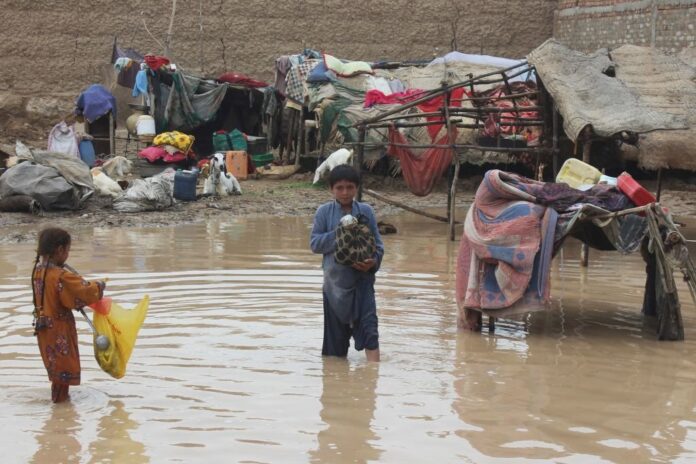Severe Flooding Hits Sindh
On August 19, 2024, Sindh faced a severe weather crisis as torrential rains pounded the region for a second consecutive day. Areas including Larkana, Qambar-Shahdadkot, Sukkur, Jacobabad, Shikarpur, Ghotki, and Kandhkot-Kashmore experienced intense rainfall, leading to widespread flooding and utility failures.
Infrastructure and Utility Failures
The heavy rains, which began on Friday night and persisted into Sunday, resulted in significant disruptions:
- Power outages affected numerous areas, with electricity feeders tripping and power supply interruptions.
- Sewage systems overflowed, and telecommunication networks broke down.
- Roads and streets were heavily flooded, hampering transportation and daily activities.
- Municipal dewatering efforts were ineffective due to insufficient equipment and the sheer volume of water.
Damage to Mohenjo Daro
The ancient site of Mohenjo Daro, a UNESCO World Heritage site, was partly affected by the rains. Reports indicate that the site received 119mm of rainfall, leading to water accumulation and minor damage to the main stupa. Immediate repair efforts were undertaken to address the issues and prevent further damage.
Health and Safety Impact
The rain severely impacted health services, particularly at Chandka Medical College Teaching Hospital in Larkana. The hospital faced power outages and water intrusion, complicating patient care and operations. Several government buildings, including police stations, were also affected by flooding.
Casualties Reported
The torrential rains resulted in multiple fatalities and injuries:
- Ayaz Bugti died when a cattle pen roof collapsed in Rahim Bugti village.
- Arbab Shaikh succumbed to injuries from a house roof collapse in Bakrani town.
- Jawad Chandio drowned in rainwater in Larkana.
- Mudassir Surhiyo was electrocuted in Larkana.
- Wahid Bakhsh Bhayo was killed by lightning in Shikarpur.
Economic and Social Disruptions
The flooding has halted business and commercial activities for two consecutive days. Routine trade, transportation, and access to drinking water have been severely disrupted. Villagers are being relocated to safer areas due to rising water levels in the Indus and its tributaries.
Recovery and Response Efforts
Sukkur Mayor Arsalan Islam Sheikh reported progress in dewatering efforts, with 80% of the city cleared of rainwater. Additional labor and resources are being deployed to address remaining issues. However, challenges remain, including reported negligence by some employees at the Sukkur Barrage and theft of equipment.
Ongoing Situation
Shaheed Benazirabad, Naushahro Feroze, and Sanghar districts continue to receive moderate rainfall, exacerbating existing flooding and infrastructure problems. Efforts are underway to manage the situation and mitigate further impact.
Conclusion
Sindh is facing a severe weather crisis with extensive flooding affecting infrastructure, health services, and daily life. Immediate recovery efforts are in progress, but the region remains under significant strain as it deals with the aftermath of the torrential rains.






